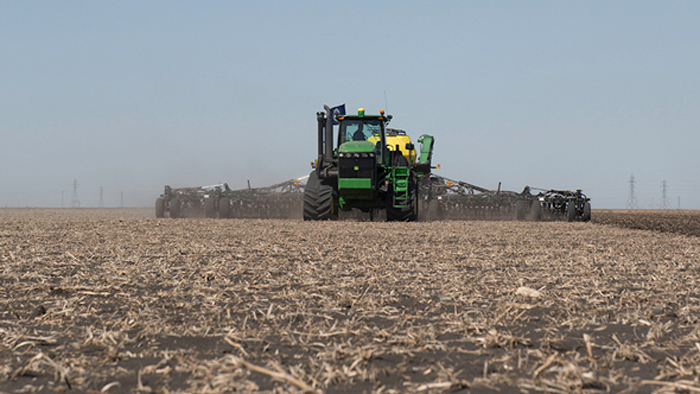Soybean Seeding: Plant Late and Tempt Fate

By Geoff Geddes
The early bird may get the worm, but how enticing is that? For the soybean farmer who plants early, however, the incentives are more appealing. So with the prime window for planting upon us, where do things stand with soybean seeding and what are the advantages of being the early bird? Conversely, if you missed the boat on early planting, how do you keep from going under?
“By this time of year, most growers have picked the variety that works best for them,” said Dennis Lange, Industry Development Specialist (pulses) with Manitoba Agriculture, Food & Rural Development.
While many had their soybeans planted in early May in the valley, Lange reported that a lot of planting slowed down two weeks ago and picked up again this past week.
A frosty reception
“Producers in western Manitoba are finishing up their planting in the last week of May,” said Lange, “and given good weather, the majority of beans should be in by the weekend.”
One issue that can dictate optimal planting time from year to year is frost. Like the meddling mother-in-law in the wedding party, frost risk is unpredictable and always hovering, so growers ignore it at their peril.
“This year, frost didn’t affect most producers as their crops were still in the ground, but it’s something you must always be conscious of,” said Lange.
Unlike other crops, soybeans have minimal frost tolerance and can be at risk when planting in early May, but depending on the area of the province, “once you get past May 15 there is generally less frost risk in the Red River Valley.”
Late to the party
In some years, growers had to wait until the latter half of May to plant because of poor planting conditions earlier in May. According to Lange though, even in that situation, the right choice of varieties should prevent any major problems for producers. “Planting from the second to the third week in May shows better yield benefits than in the first to second week range.”
But what happens if you’re late in making that choice?
One tool that can help is the Seed Manitoba guide, which lists all varieties of soybeans – as well as other crops – for the province, along with maturity and yield information.
“The guide breaks the varieties down into short, mid, and long season varieties,” said Lange. “While short are usually well suited to west and northwest Manitoba, the mid and long options are best for the southern and eastern areas of the province.”
As Lange explained, his department doesn’t recommend specific varieties to farmers, and at this stage of the game, options are limited. As a general rule, late planters should look for seeds with fewer “relative days to maturity,” which is the number of days from seeding to plant maturity. Based on the 2015 results from the guide, this may include some of the following varieties: NSC Moosomin RR2Y, NSC Reston RR2Y, and NSC Watson RR2Y.
Of course, the guide stresses that growers need to be cautious when using only one year of data to evaluate maturity and yield. But for late planters, it’s a place to start.
On your mark, get set, grow
All of this underlines the importance of seeding early where possible. Not only does it expand your options for seed choices, it can reduce your frost exposure.
If that’s not enough incentive for early planting, Lange has another reason.
“Growers should keep in mind that there are crop insurance deadlines. Once you get into June planting, there is more risk of encountering frost in the fall.”
The bottom line for late planters is clear: research your options, brace for some challenges and, like the bride who let her mother-in-law plan the wedding, learn from your mistakes.


